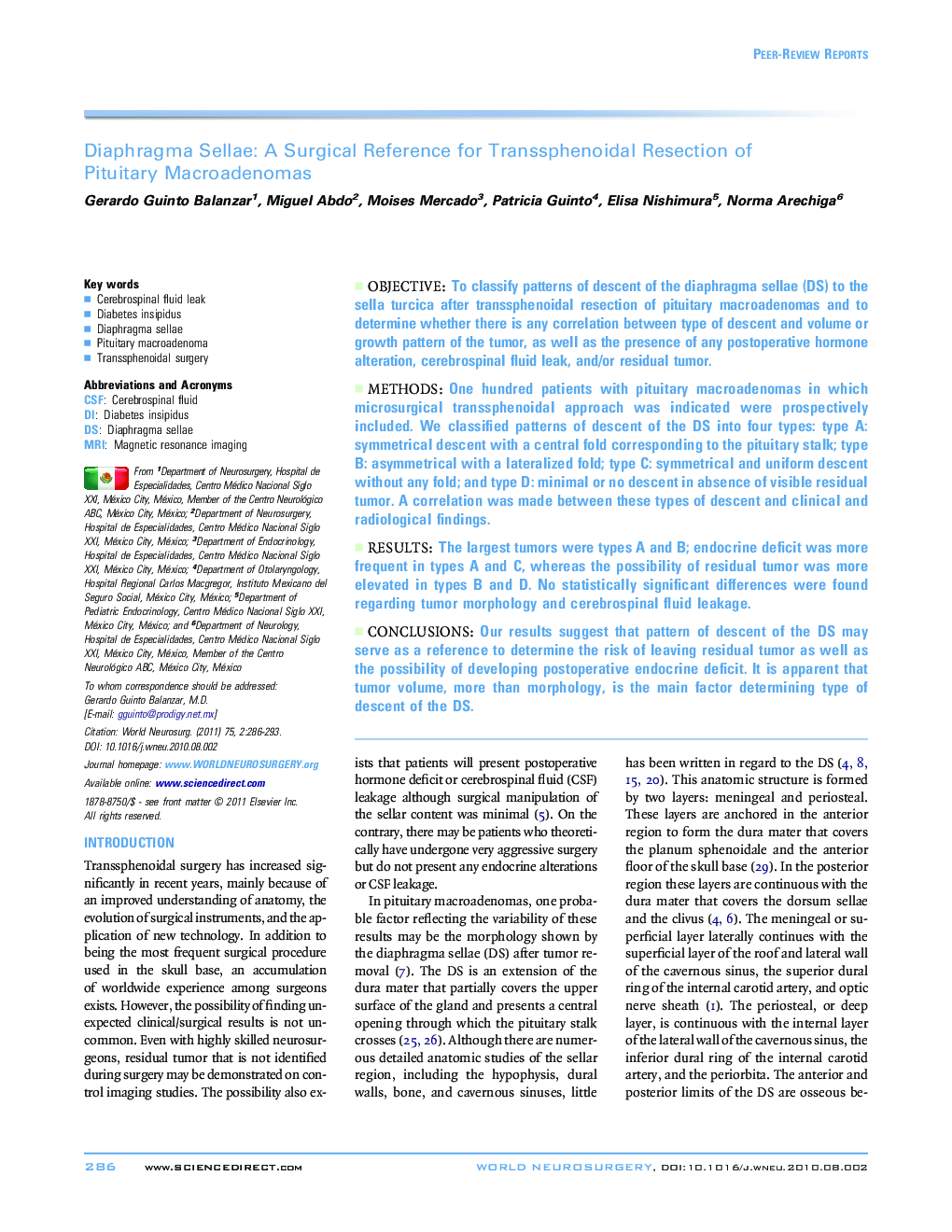| Article ID | Journal | Published Year | Pages | File Type |
|---|---|---|---|---|
| 3097470 | World Neurosurgery | 2011 | 8 Pages |
ObjectiveTo classify patterns of descent of the diaphragma sellae (DS) to the sella turcica after transsphenoidal resection of pituitary macroadenomas and to determine whether there is any correlation between type of descent and volume or growth pattern of the tumor, as well as the presence of any postoperative hormone alteration, cerebrospinal fluid leak, and/or residual tumor.MethodsOne hundred patients with pituitary macroadenomas in which microsurgical transsphenoidal approach was indicated were prospectively included. We classified patterns of descent of the DS into four types: type A: symmetrical descent with a central fold corresponding to the pituitary stalk; type B: asymmetrical with a lateralized fold; type C: symmetrical and uniform descent without any fold; and type D: minimal or no descent in absence of visible residual tumor. A correlation was made between these types of descent and clinical and radiological findings.ResultsThe largest tumors were types A and B; endocrine deficit was more frequent in types A and C, whereas the possibility of residual tumor was more elevated in types B and D. No statistically significant differences were found regarding tumor morphology and cerebrospinal fluid leakage.ConclusionsOur results suggest that pattern of descent of the DS may serve as a reference to determine the risk of leaving residual tumor as well as the possibility of developing postoperative endocrine deficit. It is apparent that tumor volume, more than morphology, is the main factor determining type of descent of the DS.
